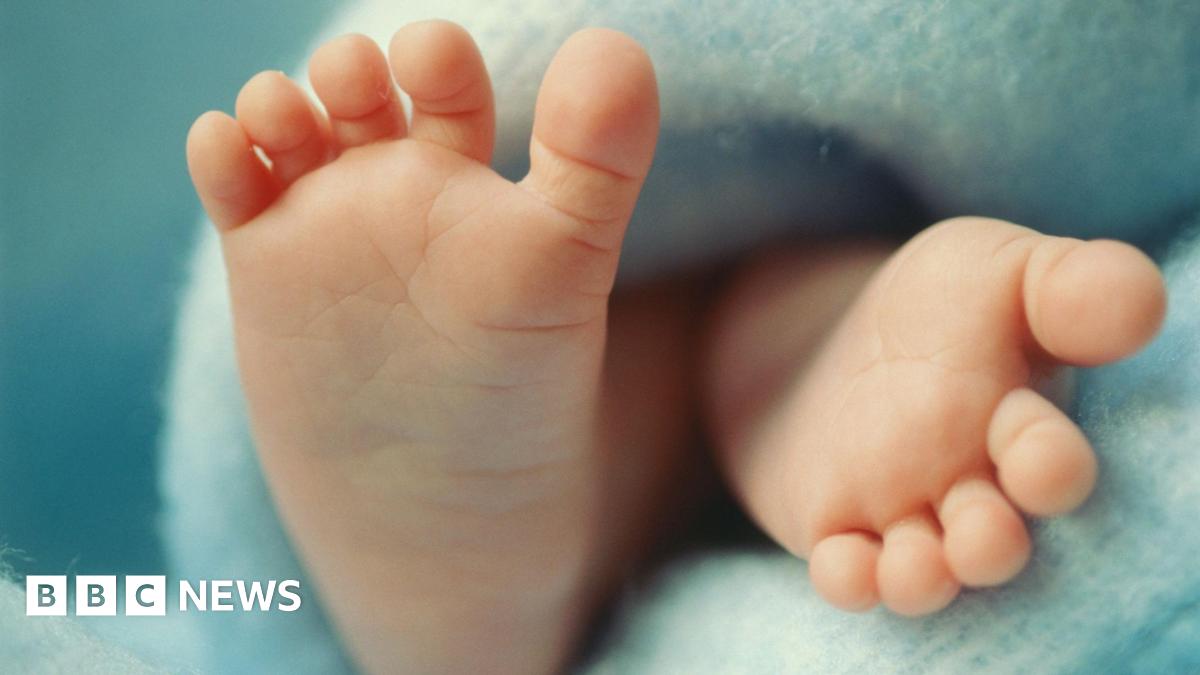Three-Person Baby Technique Prevents Inherited Diseases

Welcome to your ultimate source for breaking news, trending updates, and in-depth stories from around the world. Whether it's politics, technology, entertainment, sports, or lifestyle, we bring you real-time updates that keep you informed and ahead of the curve.
Our team works tirelessly to ensure you never miss a moment. From the latest developments in global events to the most talked-about topics on social media, our news platform is designed to deliver accurate and timely information, all in one place.
Stay in the know and join thousands of readers who trust us for reliable, up-to-date content. Explore our expertly curated articles and dive deeper into the stories that matter to you. Visit Best Website now and be part of the conversation. Don't miss out on the headlines that shape our world!
Table of Contents
Three-Person Baby Technique Prevents Inherited Diseases: A New Era of Reproductive Medicine?
The prospect of preventing devastating inherited diseases before a child is even born has moved closer to reality thanks to a groundbreaking three-person baby technique. This innovative procedure offers hope to families at risk of passing on mitochondrial diseases, offering a potential solution to a previously insurmountable challenge. But what exactly is this technique, and what are its implications for the future of reproductive medicine?
Mitochondrial diseases are a group of inherited disorders affecting the mitochondria, the powerhouses of our cells. These diseases can cause a wide range of debilitating symptoms, impacting everything from muscle function to brain development. Currently, there is no cure, making the three-person baby technique a significant breakthrough.
How Does the Three-Person Baby Technique Work?
This technique, also known as mitochondrial donation or spindle nuclear transfer, involves replacing faulty mitochondria from the mother's egg with healthy mitochondria from a donor. The process is intricate:
- Egg Extraction: A healthy egg is retrieved from the mother and another from a donor.
- Nuclear Transfer: The nucleus – containing the mother's genetic material – is removed from her egg and transferred into the donor egg, which has had its own nucleus removed. The donor egg provides healthy mitochondria.
- Fertilization: This reconstructed egg, containing the mother's nuclear DNA and the donor's healthy mitochondrial DNA, is then fertilized with the father's sperm using in-vitro fertilization (IVF).
The resulting embryo carries the majority of the mother's and father's genetic material, with only a tiny amount of DNA from the donor. This minimal contribution from the donor means the child inherits the vast majority of its genetic characteristics from its biological parents, while avoiding the inherited mitochondrial disease.
Ethical Considerations and Future Implications
While this technology holds immense promise, it's not without its ethical considerations. Concerns exist regarding the long-term health effects on children born using this technique, the potential for unintended genetic consequences, and the broader implications for human genetics. Ongoing research and rigorous monitoring are crucial to address these concerns.
The three-person baby technique is currently approved in several countries, but its legal status and accessibility vary widely. The availability and cost of this procedure also pose significant barriers for many families. Further research and development are necessary to make this life-changing technology more accessible and affordable globally.
Looking Ahead: A Promising Future for Preventing Inherited Diseases
The three-person baby technique represents a significant leap forward in reproductive medicine. While challenges remain, the potential to prevent devastating mitochondrial diseases offers immeasurable hope to countless families. This advancement highlights the incredible power of scientific innovation in tackling previously incurable conditions and paving the way for a healthier future. Further research and responsible implementation will be key to unlocking the full potential of this transformative technology and ensuring its equitable access to those who need it most. For more information on assisted reproductive technologies, consider exploring resources from organizations like the and the .

Thank you for visiting our website, your trusted source for the latest updates and in-depth coverage on Three-Person Baby Technique Prevents Inherited Diseases. We're committed to keeping you informed with timely and accurate information to meet your curiosity and needs.
If you have any questions, suggestions, or feedback, we'd love to hear from you. Your insights are valuable to us and help us improve to serve you better. Feel free to reach out through our contact page.
Don't forget to bookmark our website and check back regularly for the latest headlines and trending topics. See you next time, and thank you for being part of our growing community!
Featured Posts
-
 Sectarian Violence In Syria Prompts Israeli Response Assad Promises Druze Security
Jul 18, 2025
Sectarian Violence In Syria Prompts Israeli Response Assad Promises Druze Security
Jul 18, 2025 -
 Labours Personnel Changes Legitimate Action Or Abuse Of Power
Jul 18, 2025
Labours Personnel Changes Legitimate Action Or Abuse Of Power
Jul 18, 2025 -
 Obama Jokes About Marital Challenges Amidst Divorce Speculation
Jul 18, 2025
Obama Jokes About Marital Challenges Amidst Divorce Speculation
Jul 18, 2025 -
 7 Cylinder Two Stroke Kawasaki A Custom Motorcycle Up For Grabs
Jul 18, 2025
7 Cylinder Two Stroke Kawasaki A Custom Motorcycle Up For Grabs
Jul 18, 2025 -
 Tragic Discovery Missing Hiking Coach Found Deceased
Jul 18, 2025
Tragic Discovery Missing Hiking Coach Found Deceased
Jul 18, 2025
Latest Posts
-
 Experienced Coach Dies After Separating From Hiking Group In National Park
Jul 18, 2025
Experienced Coach Dies After Separating From Hiking Group In National Park
Jul 18, 2025 -
 Cult Of Personality Sanders Sharp Criticism Of Trumps Gop
Jul 18, 2025
Cult Of Personality Sanders Sharp Criticism Of Trumps Gop
Jul 18, 2025 -
 Rac Investigation Rising Kiss And Fly Fees At Major Uk Airports
Jul 18, 2025
Rac Investigation Rising Kiss And Fly Fees At Major Uk Airports
Jul 18, 2025 -
 Uk Airport Kiss And Fly Fees Soar Rac Report Highlights Increases
Jul 18, 2025
Uk Airport Kiss And Fly Fees Soar Rac Report Highlights Increases
Jul 18, 2025 -
 Karate Kid Legends Tops Weekly Fandango Rentals Sonys Success
Jul 18, 2025
Karate Kid Legends Tops Weekly Fandango Rentals Sonys Success
Jul 18, 2025
